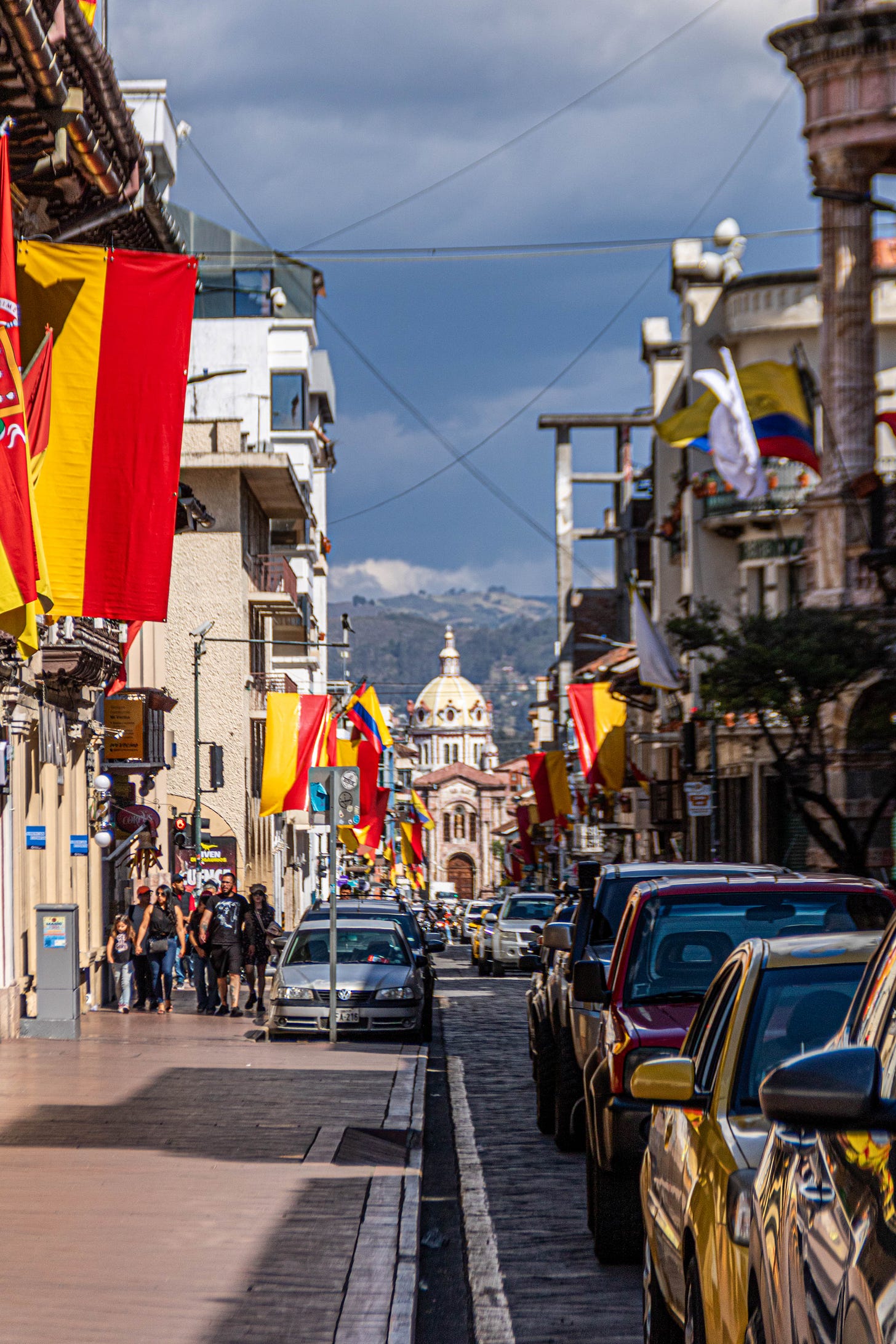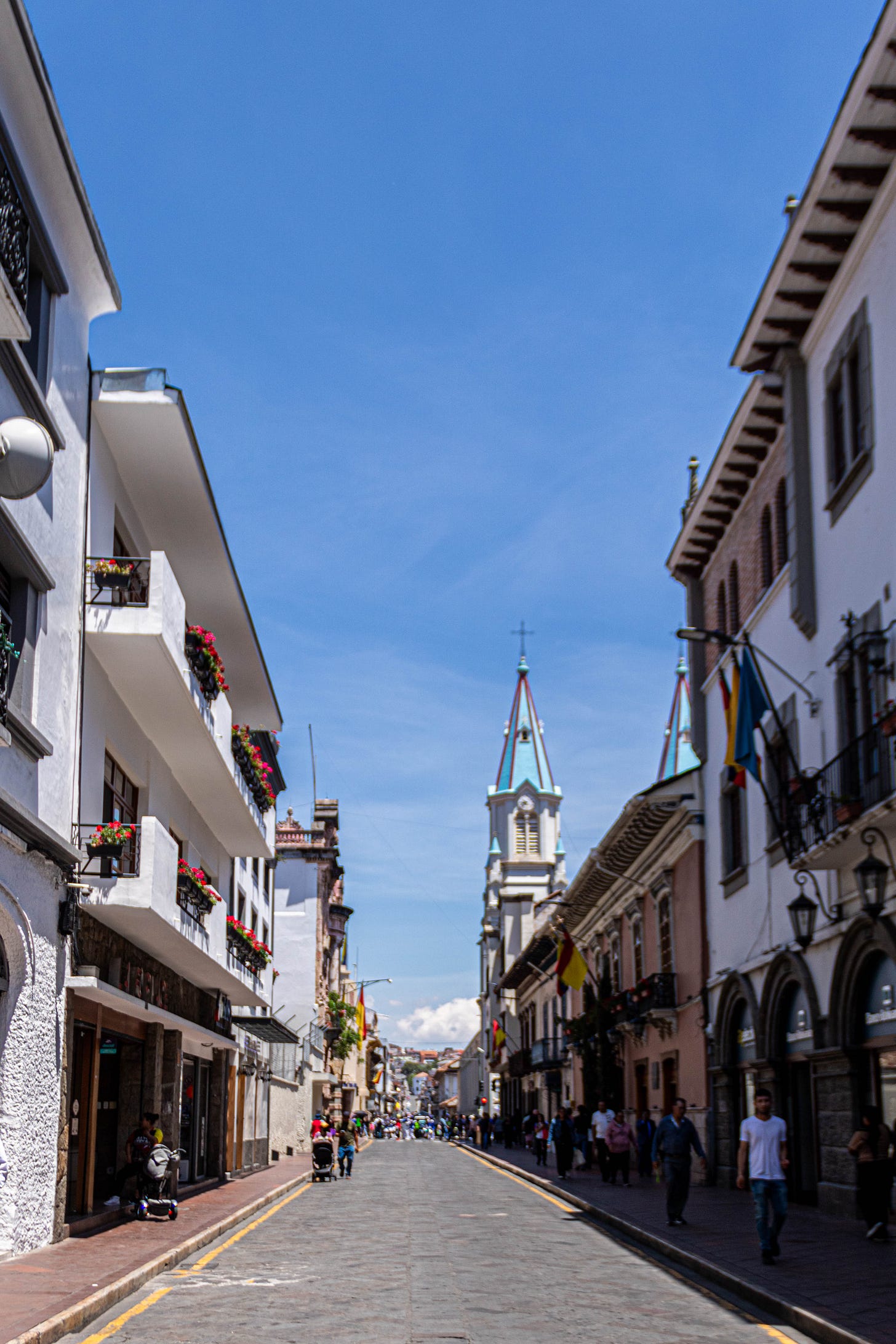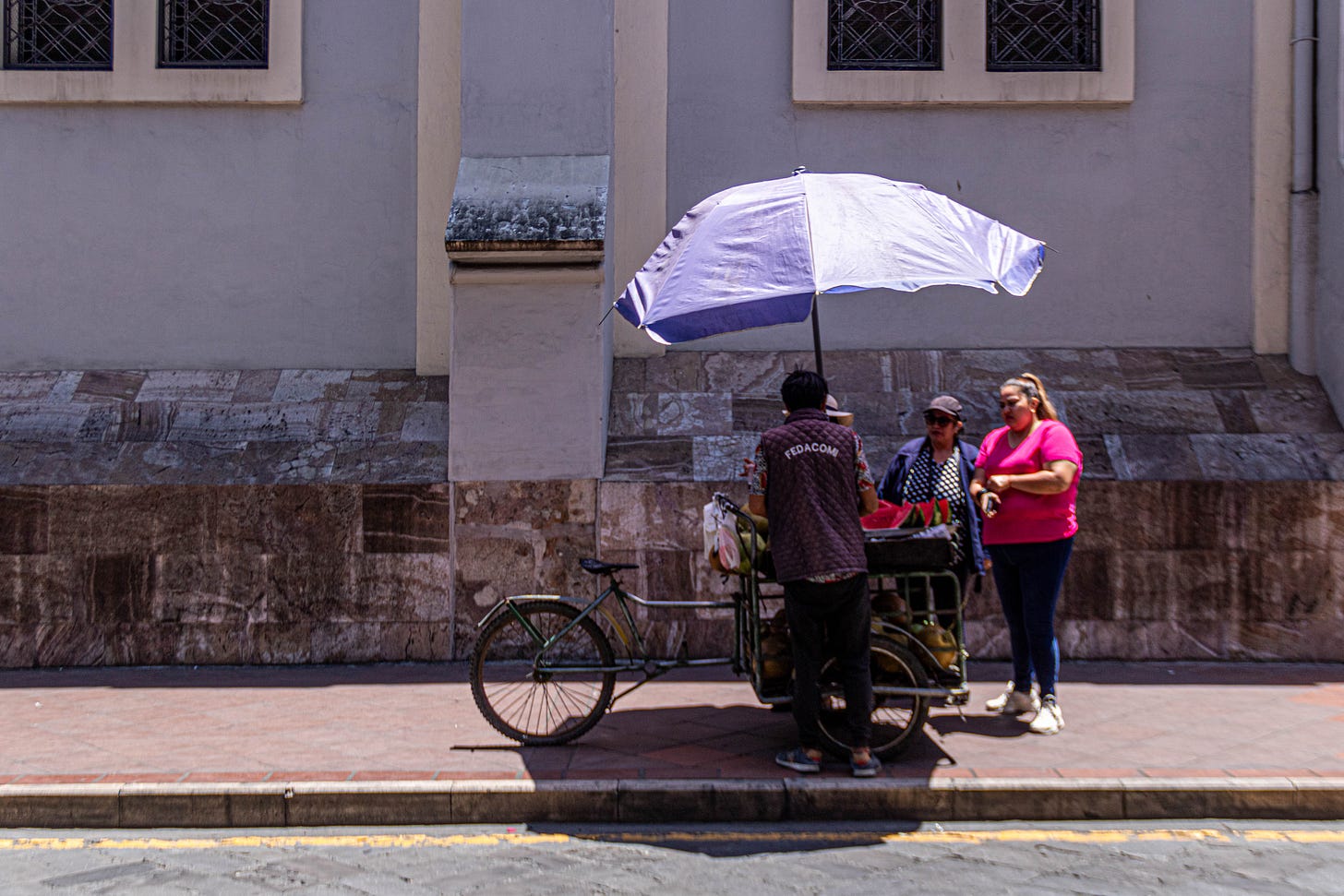I spent three months in Ecuador with Fernanda. We mainly stayed in Riobamba, the city where her family lives. From there, we travelled to other cities and parts of the country. We visited Quito, Baños and we also went on a family trip to one of my favourite places in the country the Quilotoa Lake.
Another place I really enjoyed was Cuenca, where we spent a week hosted by Fernanda’s aunt and uncle. They not only hosted us, but they introduced us to the city’s beauty, taking us to its unique spots, restaurants, and shops.
I have to say that Fernanda’s aunt and uncle were so welcoming that they made me feel at home, we talked a lot drinking coffee or tea. They shared about the city and why they like to live there and they were very curious about my life and Italy. I was happy to share some homemade Italian food with them.
Cuenca is a picturesque city located in the Andean highlands, known for its colonial charm, vibrant culture, and natural beauty. As the third-largest city in Ecuador, it is the capital of the Azuay Province. Cuenca is a centre for arts and crafts, especially Panama hats, which are traditionally made here. You can explore markets, galleries, and workshops to experience local artisanship.
Surrounded by the Andes mountains, Cuenca offers stunning landscapes and is close to Cajas National Park, a high-altitude park with glacial lakes, hiking trails, and unique flora and fauna. We visited this park and I will write about it in the next post.
The city is crossed by four rivers, with the Tomebamba River being the most notable. Along its banks, you'll find scenic walking paths and green spaces perfect for relaxation, and for running. Thanks to Fernanda’s aunt I was able to run in one of these parks.
Cuenca has deep historical roots, originally founded as a Cañari settlement before becoming a major city of the Inca Empire under the name Tomebamba. The Spanish colonized the area in the 16th century, leaving behind much of the architecture seen today.
The first place we visited is Cuenca's downtown, known as the Centro Histórico de Cuenca, which is the cultural and historical heart of the city, offering a captivating blend of colonial charm and modern vibrancy. Recognized as a UNESCO World Heritage Site since 1999, the downtown area is a treasure trove of architecture, history, and cultural life.
The most famous building of the old town is the New Cathedral (Catedral de la Inmaculada Concepción), this iconic structure, with its striking blue domes, is the most recognizable landmark in Cuenca. Built in the 19th century, it combines Romanesque Revival and Neo-Gothic styles, with an interior featuring stunning marble and stained glass. In front of the New Cathedral, there is the Old Cathedral (El Sagrario), which was built in 1557, this is the city’s first church. Now a museum, it showcases religious art and the history of Catholicism in the region.
Another important feature of Cuenca is the Colonial and Republican-Era Buildings, many of the downtown's buildings feature ornate facades, wrought-iron balconies, and tiled roofs, reflecting Cuenca's colonial past.
The central square, Parque Calderón, is surrounded by key landmarks, including the New Cathedral. It’s a gathering place for locals and visitors, often hosting cultural events.
A lively street with cafes, restaurants, and bars is Calle Larga, a hub for nightlife and dining, especially along the banks of the Tomebamba River. Many streets in the historic centre are walkable, allowing you to leisurely explore its beauty.
As you have followed me since the beginning of my blogs, you know that I love markets, and this city is full of them, I think I will do an article dedicated to Ecuadorian markets. One of the markets that most impressed me in the old town is the Flower Market, known as Plaza de las Flores, an enchanting spot that perfectly captures the city’s charm. Located near the New Cathedral, this small square buzzes with life, thanks to the colourful flower market that has become its hallmark. Stalls overflow with fresh blooms, from roses and lilies to exotic tropical flowers, creating a feast for the senses with their vivid hues and fragrances.
Beyond its visual appeal, the plaza holds cultural significance. It’s a popular gathering spot for locals, who come not just to buy flowers but to partake in the tradition of preparing herbal and floral remedies, often linked to Cuenca’s rich heritage of natural medicine. You might even spot indigenous women offering cleansing rituals known as "limpias," using aromatic herbs and flowers.
Surrounded by quaint shops and cafés, the Plaza de las Flores is a wonderful place to pause, enjoy the lively atmosphere, and soak in the essence of Cuenca’s daily life.
The market's charm lies in its ambience. The small square is framed by the New Cathedral and the Iglesia del Carmen, with vendors displaying their blooms under colourful umbrellas. The air is filled with the intoxicating scent of fresh flowers, and the setting feels both peaceful and lively.
Cuenca has gained popularity among expats, particularly retirees, for its pleasant climate, affordable cost of living, and vibrant community. I have to admit that I like this city, it is beautiful and lively, with a lot of green areas, if I ever move to Ecuador I would love to live there. There are still many things to say about Cuenca, as I mentioned I will write about Cajas National Park in the coming posts.
See you soon,
Flavio
































I liked Cuenca too. I am always surprised when I enjoy places that gringos flock to. But it is a beautiful city, and we met so many nice people there. I love your pics of the cathedral domes at night!
This is my favorite city I've lived in. I miss it, and I really enjoyed looking through this. Thank you!